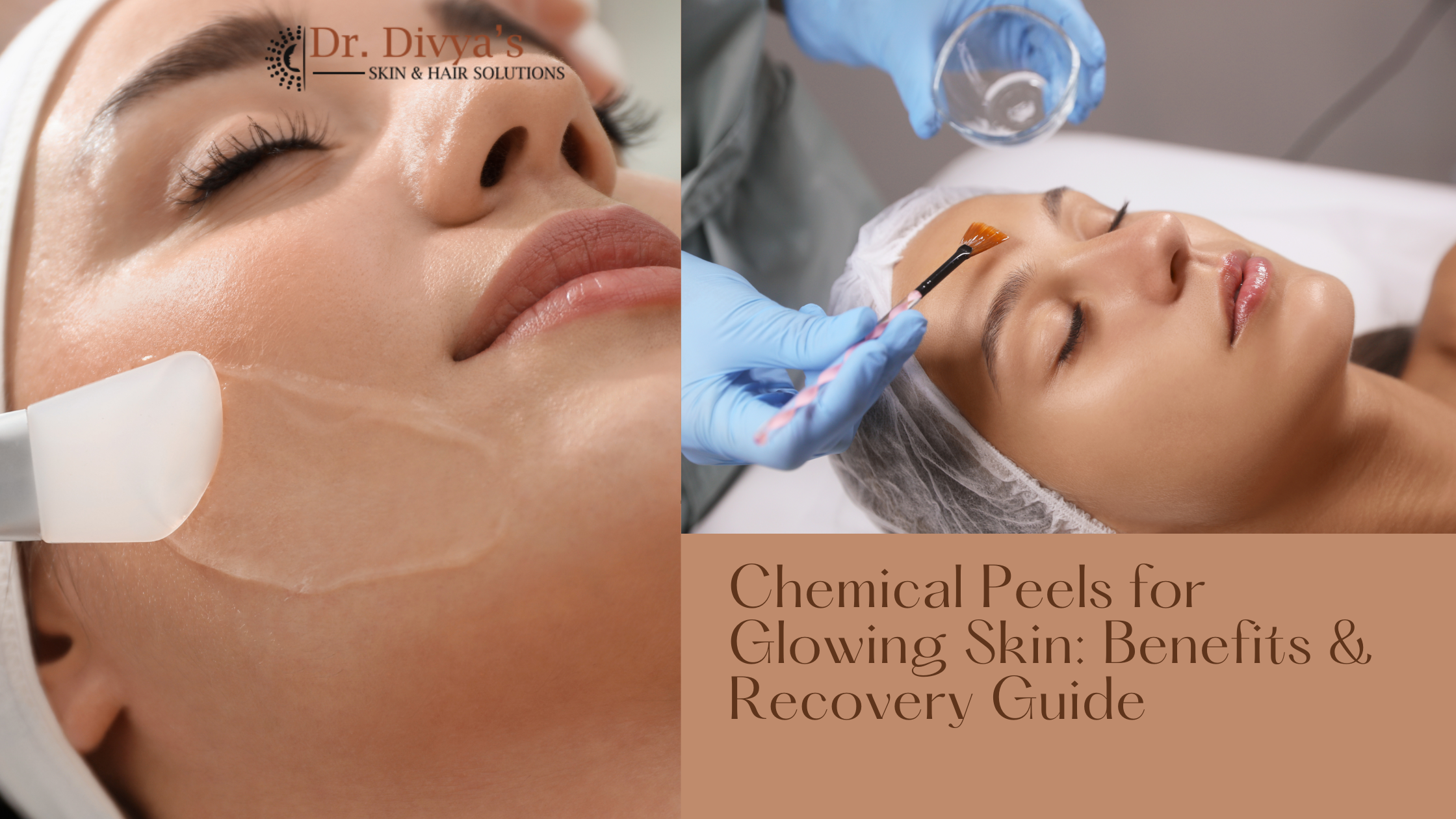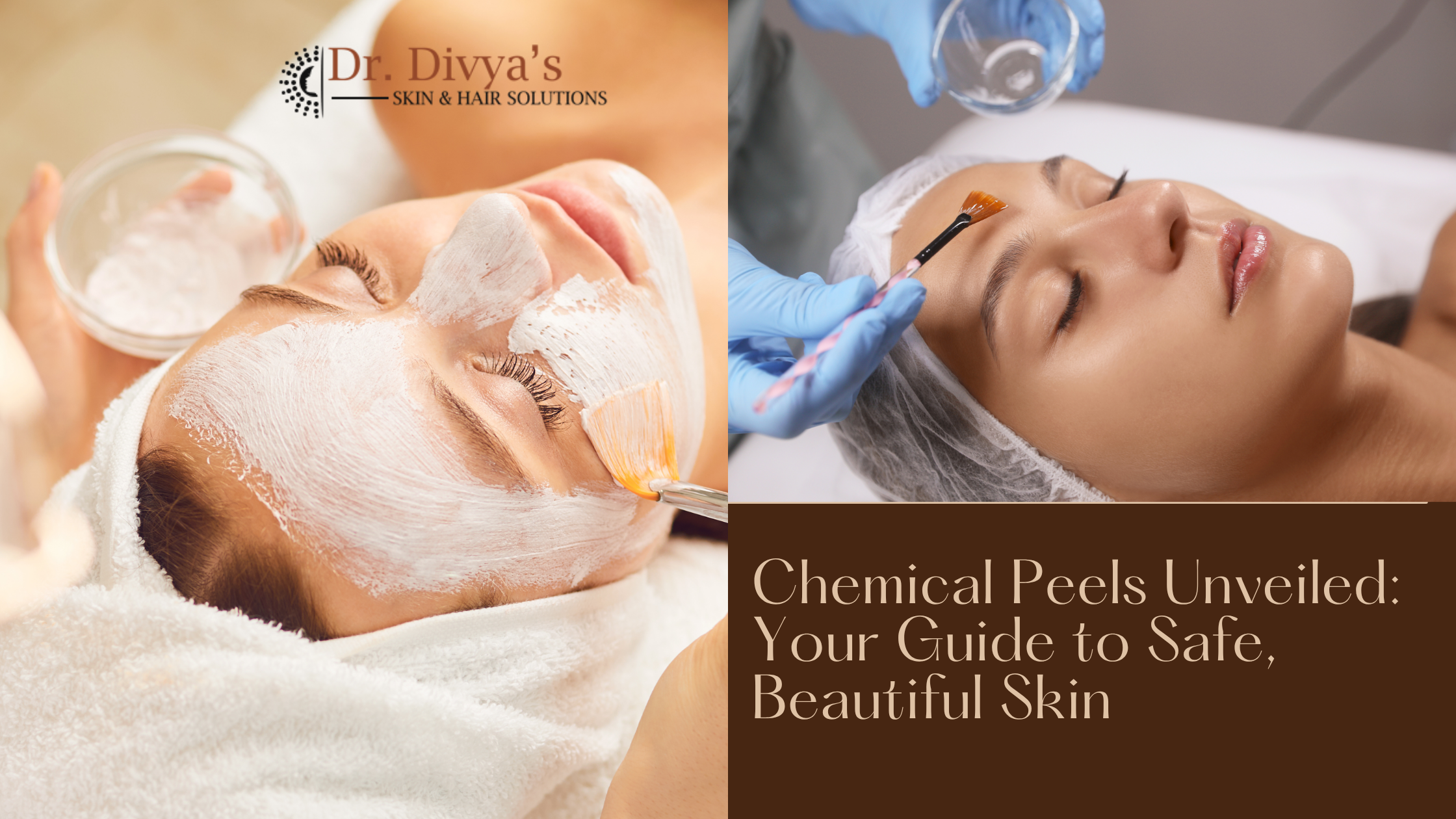Posted date on Aug 20, 2025
Everyone dreams of radiant, glowing skin, but daily exposure to pollution, sun, and stress can leave skin dull, uneven, and prone to blemishes. Chemical peels are a popular skincare solution that can help rejuvenate the skin, reduce pigmentation, and promote a youthful glow
In this guide, we'll explore what chemical peels are, their benefits, types, recovery tips, and FAQs to help you make an informed decision for healthy, glowing skin.
What Are Chemical Peels
A chemical peel is a cosmetic treatment where a solution is applied to the skin to remove dead cells, stimulate skin regeneration, and improve texture. The peel penetrates the outer layers of the skin, promoting collagen production and revealing fresh, smooth skin underneath.
Chemical peels can treat various skin concerns, including:
Types of Chemical Peels
- Superficial Peels : Gentle peels using mild acids like glycolic or lactic acid.
- Ideal for dull skin, minor discoloration, or light acne scars.
- Minimal downtime, usually a few days of mild redness or peeling.
- Medium Peels : Penetrate deeper layers using trichloroacetic acid (TCA).
- Effective for deeper pigmentation, fine lines, and uneven skin tone.
- Recovery may take 7-14 days with noticeable peeling.
- Deep Peels: Strongest peels using phenol or high-concentration acids.
- Target severe sun damage, deep wrinkles, or significant scarring.
- Longer recovery time (2-4 weeks) and usually done under professional supervision.
Benefits of Chemical Peels
Glowing, Rejuvenated Skin: Removes dull, dead skin cells to reveal a fresh complexion.
Reduces Acne Scars & Pigmentation: Helps fade dark spots, melasma, and post-acne marks.
Improves Skin Texture: Smoothens rough patches and fine lines.
Stimulates Collagen Production: Promotes firmer, youthful skin.
Boosts Skincare Absorption: Post-peel, serums and moisturizers penetrate deeper for better results.
Recovery Tips After a Chemical Peel
Follow Post-Care Instructions: Your dermatologist will guide you on cleansing and moisturizing.
Avoid Sun Exposure: Use a broad-spectrum sunscreen daily to protect sensitive skin.
Do Not Pick or Scratch: Let peeling skin fall naturally to prevent scarring.
Stay Hydrated: Drink plenty of water and use gentle moisturizers.
Avoid Harsh Products: Skip retinoids, exfoliants, or strong acids until fully healed.
Conclusion
Chemical peels are a powerful skincare treatment for achieving radiant, youthful skin. By understanding the different types, benefits, and recovery steps, you can choose the right peel for your skin concerns and maintain lasting results. Always consult a certified dermatologist to ensure safety and optimal outcomes.
FAQs on Chemical Peels
1. Are chemical peels safe for all skin types?
Yes, when performed by a qualified professional. Some peels may be better suited for certain skin tones, so consultation is essential.
2. How long does it take to see results from a chemical peel?
Superficial peels may show results within a week, while medium and deep peels may take a few weeks to reveal fully rejuvenated skin.
3. Can chemical peels help with acne scars?
Yes, chemical peels can reduce mild to moderate acne scars by removing damaged skin layers and stimulating collagen production.
4. How often should I get a chemical peel?
Frequency depends on the type of peel and skin condition. Superficial peels can be done every 4-6 weeks, while medium and deep peels require longer intervals.
5. Is there any downtime after a chemical peel?
Downtime varies: superficial peels may cause mild redness, medium peels may require 1-2 weeks, and deep peels can need 2-4 weeks of recovery.





